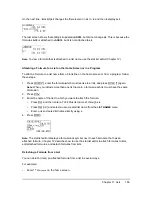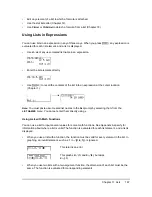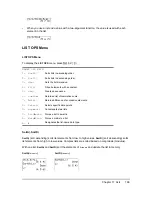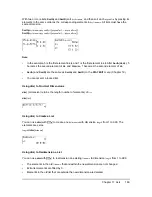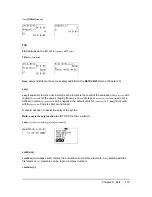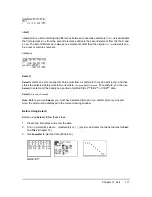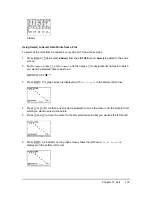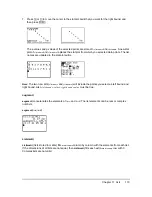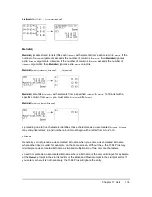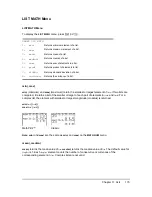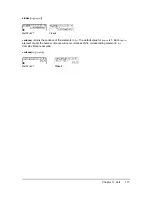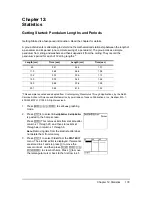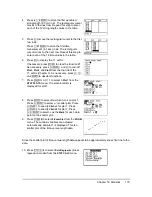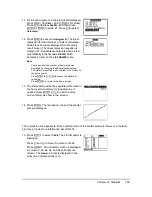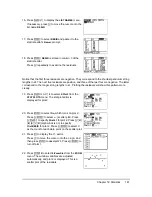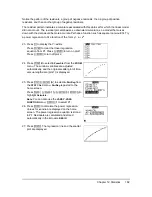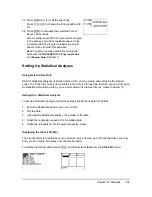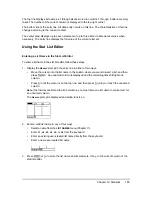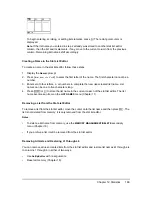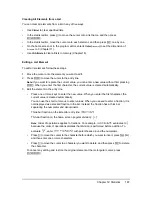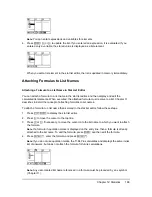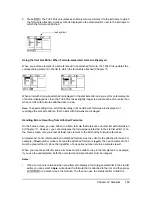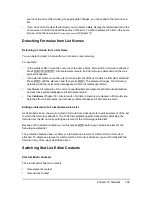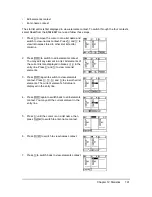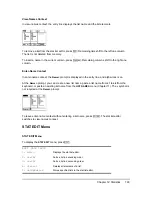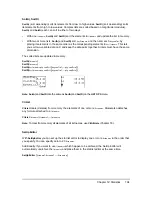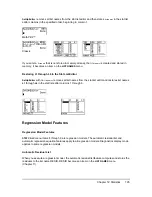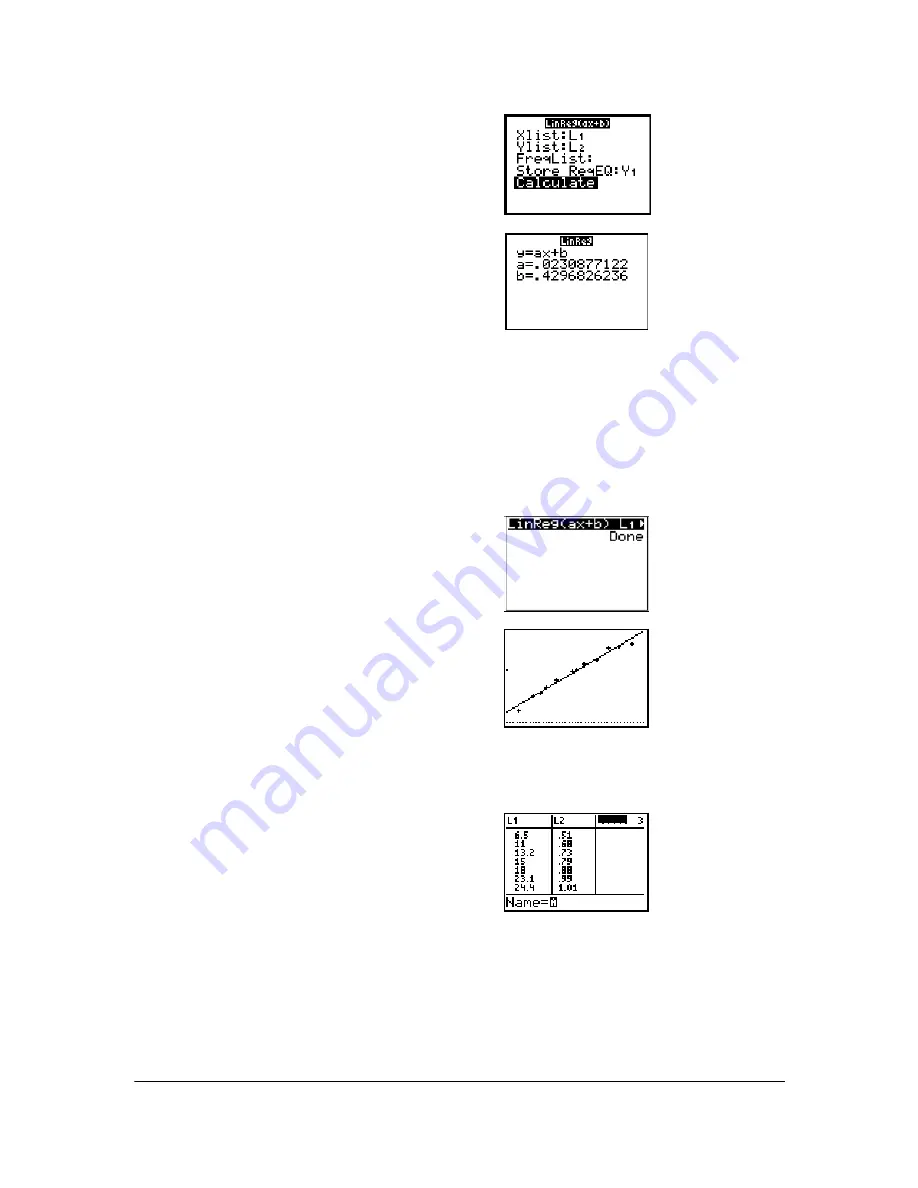
Chapter 12: Statistics
180
The regression line appears to fit the central portion of the scatter plot well. However, a residual
plot may provide more information about this fit.
11. Fill in each argument in the stat wizard displayed.
Press
y d
(for
Xlist:
),
and
† y e
(for
Ylist:
),
Press
† †
(to
Store ReqEQ:
)
and then press
t a Í
to paste
Y1
. Press
†
(to
select
Calculate
).
12. Press
Í
to execute
LinReg(ax+b)
. The linear
regression for the data in
L1
and
L2
is calculated.
Values for
a
and
b
are displayed in a temporary
result screen. The linear regression equation is
stored in
Y1
. Residuals are calculated and stored
automatically in the list name
RESID
, which
becomes an item on the
LIST NAMES
menu.
Note
:
-
You can control the number of decimal places
displayed by changing the decimal mode setting.
-
The statistics reported are not stored in the history on
the home screen.
-
Press
5
~ ~ ~
to access the statistical
variables.
-
Press
‘
to return to the home screen.
13. The stat wizard pastes the populated command in
the home screen history for repeated use, if
needed (press
‘ }
}
to view the home
screen history as show in the screen).
14. Press
s
. The regression line and the scatter
plot are displayed.
15. Press
…
1
to select
1:Edit
. The stat list editor is
displayed.
Press
~
and
}
to move the cursor onto
L3
.
Press
y
6
. An unnamed column is displayed
in column 3;
L3
,
L4
,
L5
, and
L6
shift right one
column. The
Name=
prompt is displayed in the
entry line, and alpha-lock is on.

